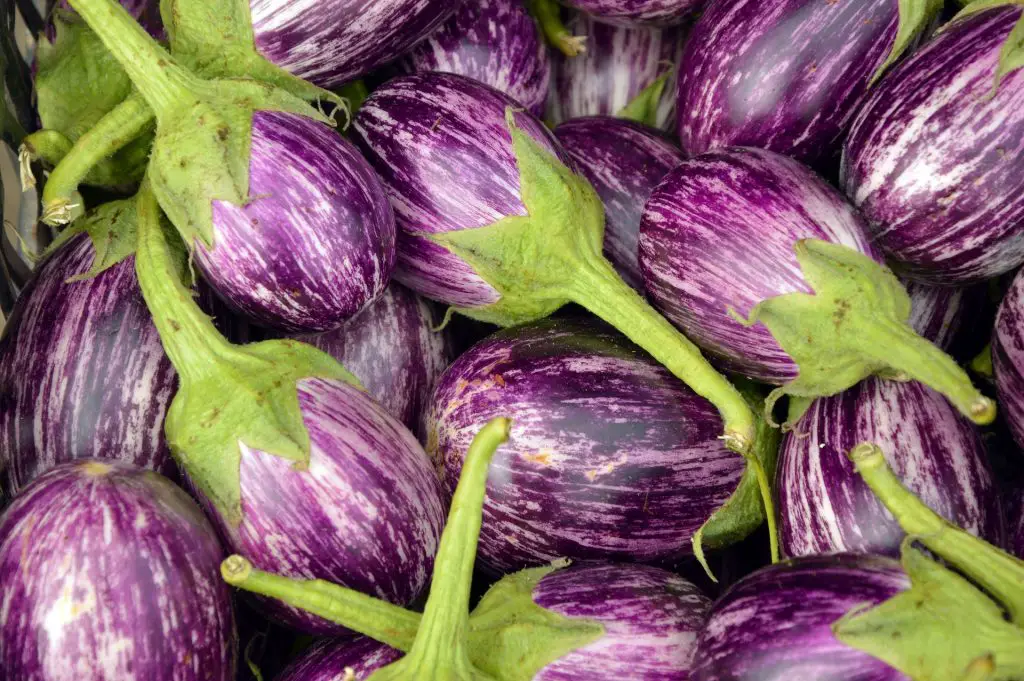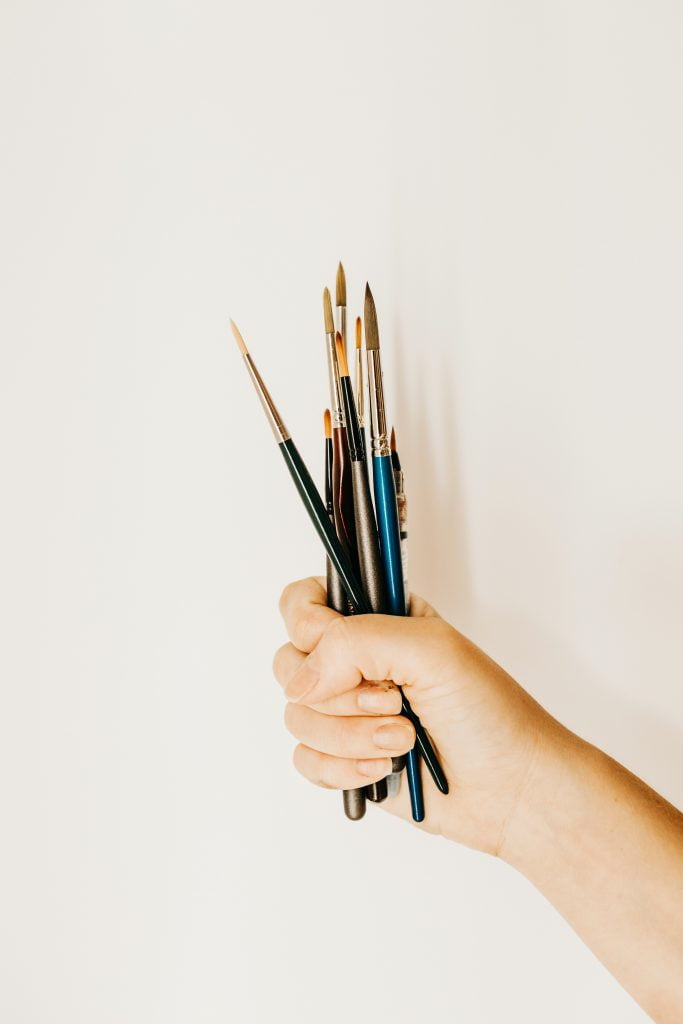Is There Female and Male Eggplants? I have read on a few Gardening and cooking blogs that there are two types of Eggplants Male and Female, that apparently produce slightly different fruit. But is this really the case?
Eggplants are not divided into male and female plants. All plants have flowers that are equipped with both female and male organs within a single flower. The advantage of this is that it takes very little for the flower to be pollinated, a puff of wind is often enough. The arrangement also means that the addition of a second eggplant does not improve the rate of pollination and yield per plant. To read more about the amount an Eggplant plant produces click here.
Eggplant flowers contain anthers that produce pollen and pistils that accept pollen. However, despite the relative proximity of the male and female parts of the flowers pollination of the Eggplants can sometimes be problematic particularly if the plants are being grown in a greenhouse where there is no wind and pollinators have limited access to the plant.
An indication of possible poor pollination is that the flowers will fall off the plant without setting fruit. If this is observed early in the season it is important to intervene by hand pollinating the remaining flowers. It is also advisable to water the plant as dry conditions can also trigger the blossoms to drop.

How To Hand Pollinate Eggplant Flowers
Hand Pollinating Eggplants is relatively simple to do and there are a few different methods that are used. The first is to lightly tap the flower with your hand during the flowering season from mid to late summer. The tapping is designed to encourage the pollen, located on the anther, to transfer to the pistil. To be sure pollination has occurred it may be necessary to repeat this process several times over a few weeks.
Another way to pollinate the flowers is by using a fine paintbrush. I have personally found that using a brush is a far more effective method for transferring pollen. An example of the types of brushes that are best for this purpose is shown below.

Steps To Hand Pollinate Eggplants
- The ideal time to hand pollinate is in the early to mid-morning as the flowers tend to be open at that time.
- The brush used should be free of contaminants and only used to pollinate one variety of eggplant. Using the brush on different varieties of eggplants may result in accidental hybridization and unexpected results.
- To pollinate the flowers gently push the brush into the center of the flower, rotating it a few times.
- The process may be repeated on the next flower using the same brush, there is no need to clean it in between flowers.
- If you are successful the flower will close sometime after the hand pollination has occurred. This is a sure sign to expect tiny eggplant to appear shortly afterward.
Tips For Growing Eggplants
Eggplants are a frost-sensitive plant that thrives in warm conditions and for those living in zone 10 or higher they are generally easy to grow, however for those living in cold environments that can be more challenging. This is because they generally take longer fruit than other heat-loving plants like tomatoes which makes them more susceptible to early frosts.
If you live in one of those more challenging regions it is important to get the plants off to an early start. To do this it is best to start the plant seeds in trays undercover. The trays need to be stored in a relatively warm location inside. To avoid the need to heat an entire area you may want to consider using a heated propagation tray as it is easier to control the growing conditions.
These trays are relatively inexpensive and are well worth the investment when growing heat-loving plants like Tomatoes, Peppers, and Eggplants. Click here to see the latest price on Amazon.

When planting the seeds into trays it is best to use a specialized seed raising mix as it generally produces a higher germination rate. Seeds should be planted at a depth of 0.5 inches (1 to 2 cm) with 2 seeds per cell to ensure all the cells are occupied with seedlings. If both seedlings germinate then thin to the strongest plant.
For purchasing of seedlings we recommend visiting Thompson and Morgan’s Website in the UK as they have a broad range of seeds available. In the US try Seeds For Generations or St Clare Seeds as both companies specialize in Heirloom seeds. The variety we recommend is Black Beauty to see why click here.
In suitable conditions, seedlings will take approximately 4 to 6 weeks to reach a reasonable size allowing them to be planted out into the garden. This should ideally be done when the temperature outside is at least 60°F (15°C) or warmer and the risk of frost has passed.
If you live in a region where the weather is unpredictable and there is the potential for late cold snaps to occur it is recommended that the plant be protected. To provide protection a cloche may be used, however, we recommend using a row cover instead. The main reason for this is that the row covers are much taller than cloches which allows them to be used at the end of the season as well when the plant is relatively large. These types of protections can be used to extend the growing season by a few weeks.
If you need to purchase a row cover it is advisable to select one that is relatively tall and also has the capacity to be firmly anchored into the ground because susceptibility to wind damage increases with height. The product we recommend is the Growsun Garden Tunnel Plant Cover, which is shown in the picture below, because the hoops can be anchored deeply into the ground, and also the cover can be firmly attached to the hoops at three points. Additionally, staples are provided to enable the edges of the cover to be pinned to the ground.

When the seedlings are ready to be planted out into the garden they should be placed around 12 to 16 inches (30 to 40 cm) apart. Ideally, the soil should be moist and free draining with plenty of organic matter. To achieve these soil conditions we recommend using the “No Dig” method because it is an easy method that reduces weeds while providing adequate nutrients for the plants.
To implement the No Dig method a layer of compost, 2 to 4 inches (5 to 10 cm) thick, should be applied to the surface on an annual basis. The best time to do this is in Autumn as it will suppress the weeds throughout the winter and no additional mulch needs to be applied. Additionally, this one application of compost will be sufficient to supply nutrients to the plants for the full year, no other fertilizers are required. To read more about this technique click here.
Once that the plants have been planted it is important to ensure that the soil remains moist. Failure to supply sufficient moisture may result in the plant dropping blooms or the production of relatively small and bitter fruits.
As the size of the fruit on the Eggplants begins to increase there is a risk that the plants may begin to droop or even fall over in extreme cases. To avoid this stakes may be used to provide support for individual branches, however, I personally prefer is to use a tomato cage. The reason for this is that the cage can be used to support many different branches at once. Additionally, the cage can be installed after the plant becomes established without disrupting the roots of the plant.
The fruit will be ready to harvest around 100 to 120 days from the date of sowing. The plant will provide an ongoing supply of fruit for the next month or two up until the arrival of the first frost.
When harvesting it is important to avoid damaging the fruit or plant by using pruning shears to cut the stem rather than trying to pull the fruit off by hand.
It is also important to ensure that the fruit is ripe, which can be sometimes difficult to tell, as both under and overripe can taste bitter. The clearest indicator of this is the fruit will develop a glossy coating. Another way to test if the fruit is ready is to gently squeeze the eggplant. If indentations remain in the fruit it is an indicator that the fruit is not quite ready to pick. Once harvested the fruit will store in a refrigerator for several days.
